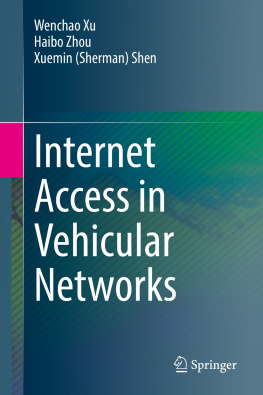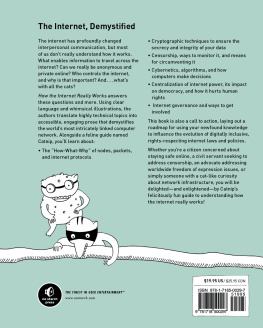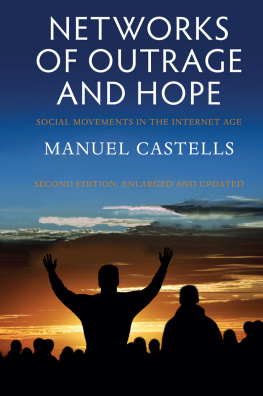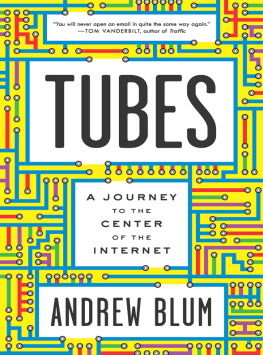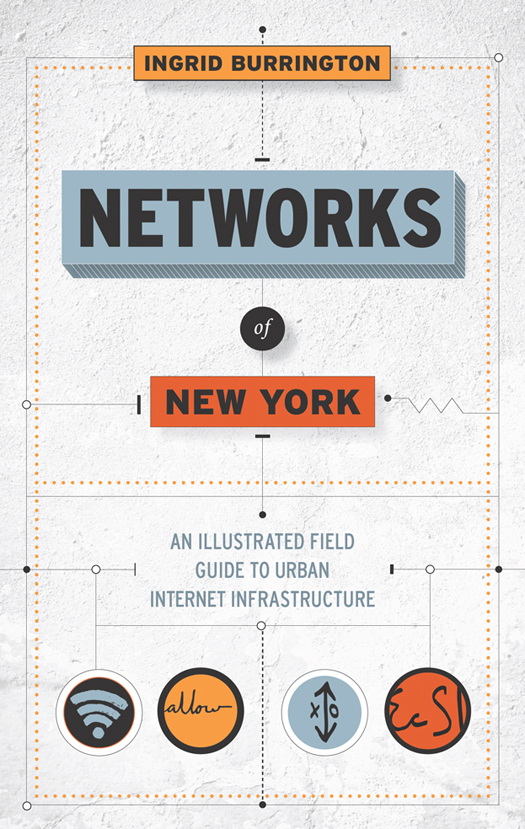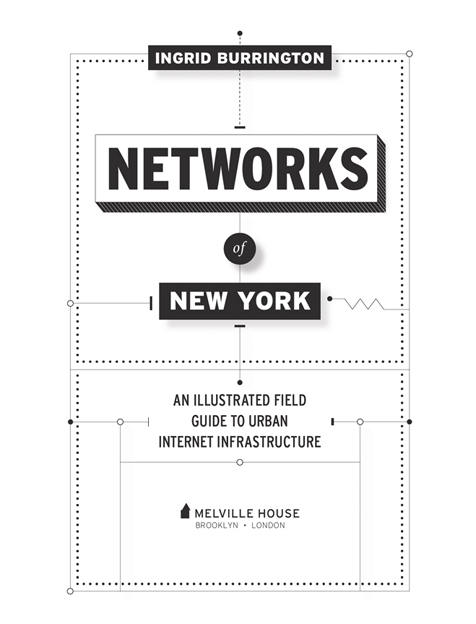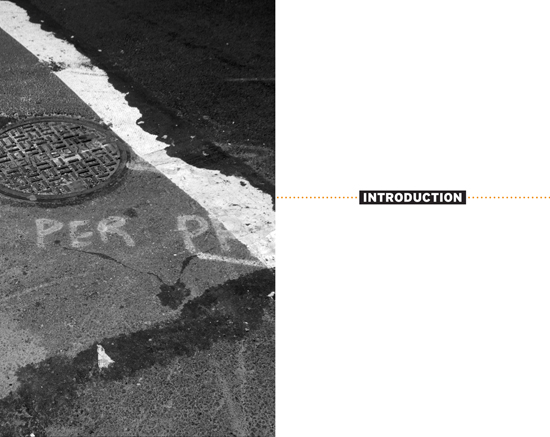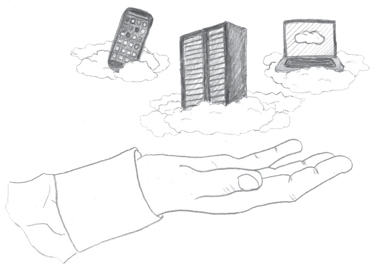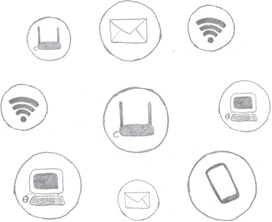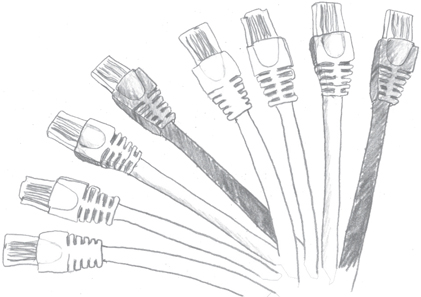How do you see the Internet?
Over the past two years, Ive asked a lot of people this question. Its a question often met with confusion or requests for clarification. Do I mean What do you think about the Internet, like in the grand scheme of things? or How do you think the Internet works? or How do you access the Internet? Really, Im asking all three.
Sometimes it helps to start with that last question: how people access or use the Internet. For most people, the answer is that they see the Internet through screensbrowsers and apps on laptops and phones. Sometimes people will point at a router, vaguely understanding thats the device their Wi-Fi connection comes from.
Once I understand the specifics of how someone interfaces with the Internet, Ill ask the second question: How do you think the Internet works, and how do you visualize that process? At this, answers vary, though they tend to follow three common trajectories, each one aligning well to certain tropes seen in stock photos and illustrations sometimes used to describe the Internet.
I have no idea. Maybe black magic.
This answer sometimes involves hand-waving and anxious, slightly apologetic faces. To be fair, there are a lot of bad stock images out there that support that answerwhich is to say, they make the mechanisms of the Internet appear impossibly complicated and opaque. You may have seen these sorts of images. Sometimes its a man at the peak of an over-Photoshopped mountain, his arms reaching for a giant laptop in the sky from which fluffy white clouds emerge. Other times, its a different man (always men in these weird dreamscapes, usually wearing ties), hands cradling poorly rendered collages of computers and a globe floating in some ethereal mist that could be data traveling across the networkor could be fairies, no one really knows.
Ironically, some of these baffling images emerge from attempts to make the Internet seem less complicated, through metaphors like the cloud. Metaphors can be useful teaching tools, but when all that people know about the Internet are metaphors, it tends to make their understanding of it more clouded, not less.
Its a network of computers talking to computers.
This is the most pragmatic answer, and its the one accompanied by stock images of network diagramsicons of computers in dots, connected to one another with lines in an ever-expanding web. And its slightly more accurate, but its still an abstraction. It doesnt really convey the scale of the network, the volume of objects that are part of it, or the places where nodes in that network end up being concentrated. In reality, the Internet isnt an evenly distributed utilitynodes arent all perfectly connected, and the quality of a connection can vary widely. While abstract network diagrams are good for getting a general idea of how its supposed to work, they sweep up the particularities of geography and history that play a large role in shaping the Internet.
Theres a whole bunch of computers somewhere doing stuff. Cyber stuff.
Were getting warmer with this answer. Theres actual reference to objects. We dont necessarily understand what theyre doing, and maybe dont understand how they work together, but they exist. The visuals associated with this answer tend to be extreme close-ups of cables and Ethernet ports or wide shots of dark hallways of server racks, illuminated only by the softly pulsing blue LED lights of machines. Rooms of wall-to-wall screens with incomprehensible diagrams or CCTV footage streaming across them.
Theres an implicit assumption in these images that the Internets physical spaces are privileged spaces, behind locked doors with retina scanners and high gates. These security procedures make sense, but the theater and optics that surround them encourage an assumption that only an elite few are clever and privileged enough to understand how the Internet actually worksand if you arent one of those people, being curious about how the Internet works is circumspect.
The thing is, all of these answersthat the Internet is made up of objects, that its a network, that its weird black magicare kind of correct. The magic part isnt necessarily how the machines work but rather the weird, amazing, terrifying, and wonderful things that people figure out how to do with the network.
These notions of how the Internet works, and the images that illustrate them, are how I saw the Internet two years ago when I started asking people that annoying question. I didnt really know what the Internet looked like, but I was pretty sure it didnt look like any of the images I saw paired with headlines about Edward Snowden or Facebook or Google. I wanted to know about the stuff that made the Internet work, where it lived, and how I could find it. There are some excellent public resources on this topic, but for some questions I really wanted to talk to someone on the inside. However, with a few exceptions, almost everyone official I tried to talk to brushed me off. The rejections didnt read as a matter of security or of protecting the networks but more like a failed transaction. I wasnt specialized, I wasnt already an expert, I wasnt well connected, and I couldnt get anyone good press with my work. I was just some curious artist, so nobody really had any interest in answering my questions. I had to find the Internet on my own, starting where I already was: New York City, a weird set of islands off the coast of America.
This is how I find the Internet, now that its been two years since I started looking: I go for a walk literally anywhere in the city. In the span of about three city blocks, I can usually figure out where theres buried fiber optic cable (and, sometimes, who owns that cable), which devices hanging above traffic intersections are talking to one another, how many cell towers are in the area, and whether Im currently under surveillance (by the NYPD or a private observer).
When I do this, I dont have a cool gadget that shows me radio frequencies moving through the air or some kind of Internet divining rod. I have no secret expertise or ninja hacker skills. Im just looking down at the ground and looking up at buildings. Thats it. To me, this is another kind of Internet magicmaybe a more practical magic, the kind that recognizes the existence of things larger than oneself and ones small worldview. Its weirdly comforting, inspiring even, to walk down Sixth Avenue with the knowledge that buried underneath my feet is a fiber optic cable that is carrying conversations, photographs, stories, secrets, and




